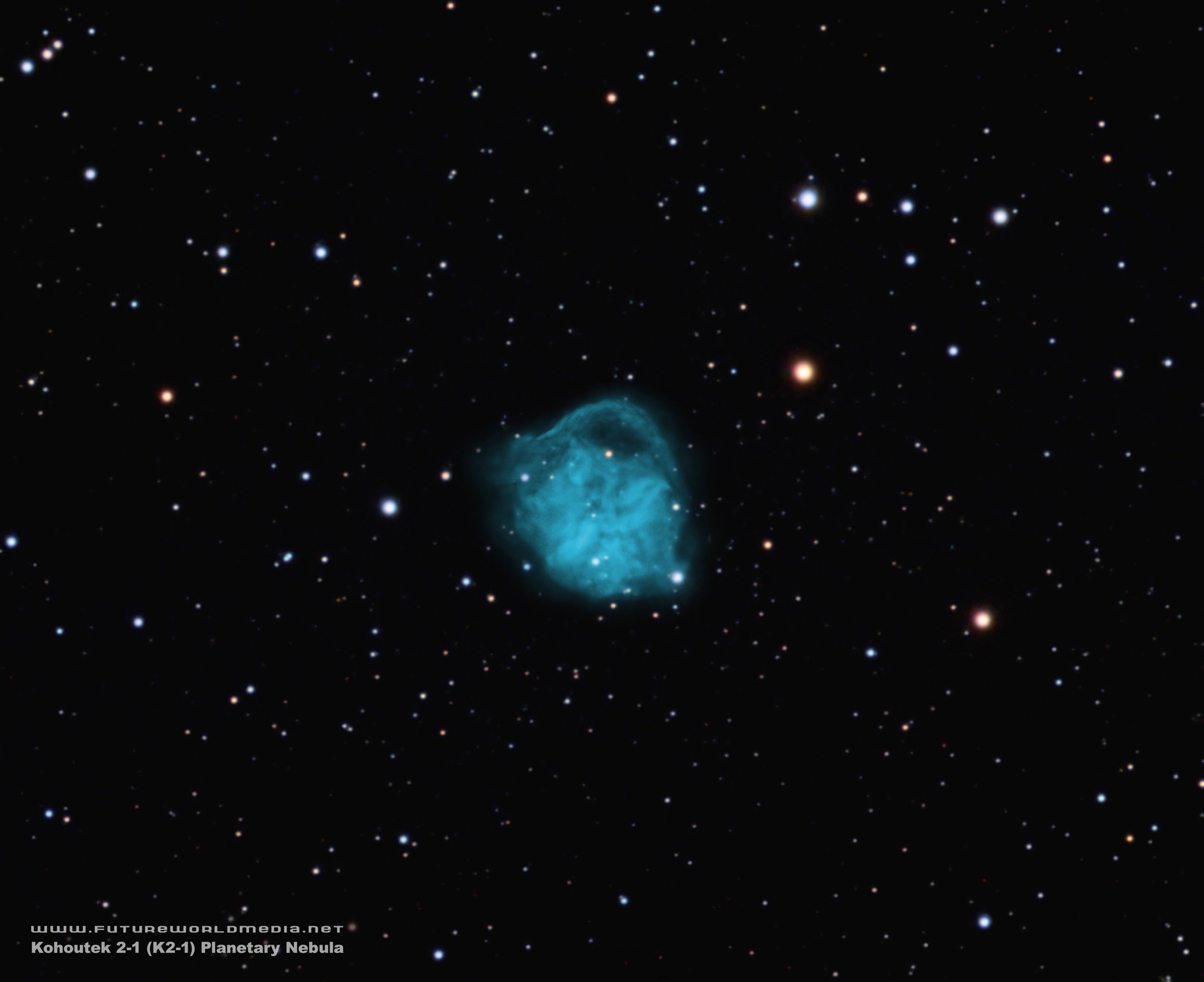
AAPOD2 Image Archives
Kohoutek 2-1 (K2-1) Planetary Nebula
Image Description and Details : I started capturing this January 9th of this year and just finished capturing last week. It's been a rough winter as usual for capturing and given my light pollution, I had a heck of a time pulling out the detail in the OIII. My friend Peter captured some Ha, but there is not a lot there so I decided given my limited nights of clear skies, I would just hammer the OIII.
In 1963 while examining the POSS plates, Kohoutek came across a number of new nebulae, most of which he was able to identify as planetary nebulae. These were published in the bulletin of the Czech Astronomical Institute Circular in 1963 as BAICz14. However, in the case of some of the objects he discovered he was not able to confirm their type. Over the years this object has been variously catalogued as an irregular galaxy (UGCA 100), a bright nebula (LBN 809) or even a reflection nebula (DG 50). SIMBAD classifies this object as a diffuse nebula with notes saying it is not a galaxy or a planetary nebula. This is somewhat odd as the current professional planetary nebula (HASH) database classifies it as a true planetary nebula. In the discovery paper Kohoutek remarks on a blue star near the centre of the nebula at about 18th mag which could be the central star.
Kohoutek 2-1 is 3700 light years away in the constellation Auriga. It has a size of 115x126 arc sec and is predominantly OIII. It has a mean surface brightness of 24.1 mag/arc sec.
Copyright: © Douglas J Struble
K2-1
Image Description and Details :
K2-1
A very faint and obscure planetary nebula some 3700 light years away in the constellation Auriga.
Initially catalogued as a planetary nebula, was later thought to be misclassified and considered to be either a reflection nebula (LBN 809), an H-II region, and even a galaxy (PGC 16765). However it has recently been rediscovered as a genuine planetary nebula. It has a size of 115x126 arc seconds and is predominantly OIII. The weaker Ha signal has a similar form to the OIII signal. However there's an odd small area of red nebulosity at the top left-hand corner. This is possibly some NII emission which would be captured by the 5nm bandwith of my Ha filter (the spectrum shows that NII is present).
Discovered by Czech astronomer Dr. Luboš Kohoutek in 1962 by visually examining the National Geographic Society-Palomar Observatory Sky Survey prints at the Astronomical Institute in Prague, Czech Republic
It has a mean surface brightness of 24.1 mag/arc sec.
Image captured on my remote dual rig at Fregenal de la Sierra in Spain between 19-23 February 2022.
Scopes: APM TMB LZOS 152 Refractors
Cameras: QSI6120wsg8
Mount: 10Micron GM2000 HPS
A total of 37 hours image capture (HaOIIIRGB)
Copyright: Peter Goodhew



